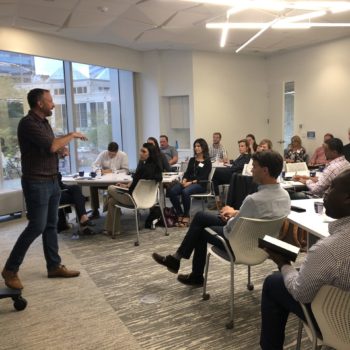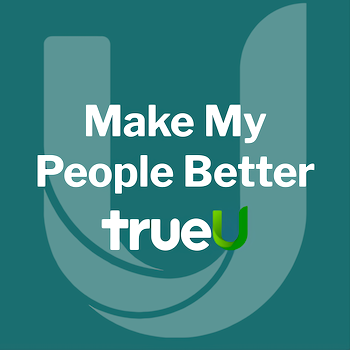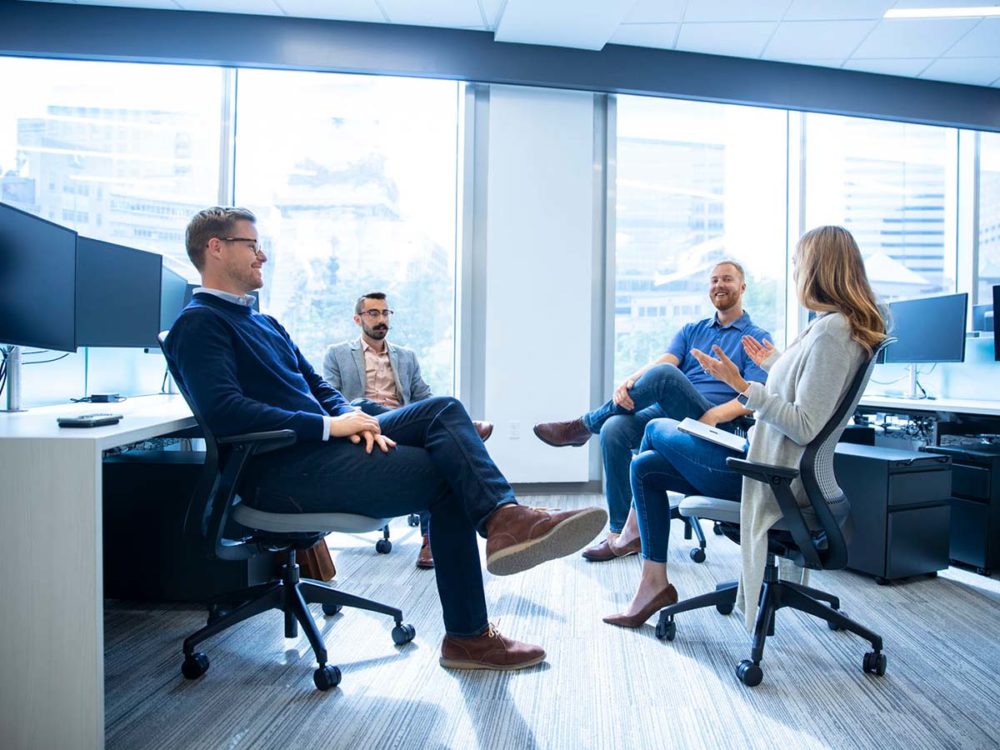Design Thinking is deeply intertwined with Resultant’s work, helping us identify our clients’ challenges and find the best solutions. But this process for innovative problem solving isn’t just for the office; we also believe it’s a powerful tool to define how you want your life to look.
On October 3, Resultant partnered with EDGE Mentoring to host, “Designing Your Whole Life Roadmap.” Mark Caswell, Resultant’s CEO, led the workshop on using Design Thinking to create intention and a framework around building a well-rounded life.
“Life isn’t about doing this particular thing or that particular thing well,” Caswell explained. “Instead, it’s about achieving whole life fulfillment.”
Over the course of the two-hour workshop, attendees were challenged to look at the five key facets of life—play, work, health, love, and faith —and apply the Design Thinking philosophy to start building a roadmap for the decades of life ahead.
“In a season full of transition and learning, the workshop helped me to better focus my actions and be intentional each step of the way,” said an event attendee.
Couldn’t join us? Here are three inspiring takeaways:
Empathy is the core of Design Thinking.
Every problem starts with people. “There’s no such thing as a data and technology problem. They’re all human problems,” Caswell said. “If we are innovators, it’s our job to listen carefully and find the truth.” When it comes to examining your own goals and challenges, tapping into the emotional and human side is important to understanding your why. The deeper you’re willing to empathize, the better you’ll find clarity and motivation.
Want to be creative? Go back to kindergarten.
Approximately 5% of the adult population is labeled creative, but 98% of kindergarteners receive the designation. Through the years, our creativity is chipped away as we move through school and learn new rules and expectations. This isn’t necessarily a bad thing. “Society doesn’t work if we don’t learn the rules,” Caswell reminded attendees. But learning how to channel your inner kindergartener is one of the best ways to reignite your creative side. Play, move, get messy, and be silly. “If you act like a kindergartner, you start to think like a kindergartener,” Caswell added.
Intentionality is a path to happiness.
Applying the Design Thinking process to your life is a method of changing your mindset for how you think about your life and your agency in it. As Caswell pointed out, we’re either going to happen to our life or life is going to happen to us, and happiness isn’t just about what happens to you. Creating intention—alongside embracing seasonality and adaptability—are key for developing harmony within our lives. When you accept that each season of your life will bring a different set of challenges and priorities, you can be more intentional and empathetic in the expectations you set for yourself.
Design Thinking has transformed Resultant’s approach to consulting (we even developed our mission and values around it). We’re thrilled to have had this opportunity to partner with EDGE Mentoring and help share one of the methodology’s many real-world applications to help anyone develop and live their best life.
Share:







